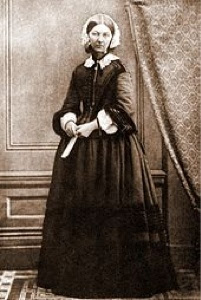

Florence nightingale professional#
This intended that students cared for people in their homes, an appreciation that is still advancing in reputation and professional opportunity for nurses today. The mission of the school was to train nurses to work in hospitals, to work with the poor and to teach. The first official nurses' training programme, the Nightingale School for Nurses, opened in 1860. The Nightingale Pledge taken by new nurses was named in her honour, and the annual International Nurses Day is celebrated around the world on her birthday. It was the first secular nursing school in the world, now part of King's College London. In 1860, Nightingale laid the foundation of professional nursing with the establishment of her nursing school at St Thomas' Hospital in London. She was known as "The Lady with the Lamp" after her habit of making rounds at night. She came to prominence while serving as a nurse during the Crimean War, where she tended to wounded soldiers. Gladys W.Florence Nightingale, ( – 13 August 1910) was a celebrated British social reformer and statistician, and the founder of modern nursing.Moffitt Hospital floor nurse with IV drip by Dennis Galloway, 1969, Photograph Collection, School of Nursing.Joseph College of Nursing records, MSS 81-10 and MSS 94-35 Joseph College of Nursing by Ashworth of London, circa 1960, St. Faculty instructor in Anatomy and Physiology Laboratory at St.Nursing students playing records and reading in dormitory, 1955, Photograph Collection, School of Nursing.Nurses in the library, circa 1950s, UCSF Medical Center at Mount Zion Archives.Joseph College of Nursing tree planting ceremony by Don Bosco Studios, S.F., circa 1940-1960, St.

Nuns gathered around an iron lung, undated, from St.

Archives and Special Collections also holds the fascinating Florence Nightingale Memorial Collection, created by Country Joe McDonald of Country Joe & the Fish.
Florence nightingale series#
We hope you enjoy this series of digital images from UCSF’s Archives and Special Collections, all digitized and available online through Calisphere.

Today, we celebrate the history of nursing and nurses of all kinds, and the essential, life-saving work that they perform. National Nurses Week begins each year on May 6 (National Nurses Day) and ends each year on May 12 (Florence Nightingale’s birthday). Public domain, courtesy of Wikimedia Commons Celebrating National Nurses Week Nightingale, a mathematician and statistician, recognized the importance of eye-catching visuals in communicating the impact of her innovations. While Nightingale is well known as one of the world’s first nurses, she is less well known for her strikingly lovely data visualizations (including pie charts and a rose-shaped design called the “coxcomb”), which she used to highlight the number of deaths from diseases, in addition to deaths from wounds or injury, during the Crimean War. Her improvements brought a dramatic decline in the mortality rate at these hospitals, which had previously been as high as 40%. She implemented basic cleanliness measures, such as baths for patients, clean facilities, and fresh linens, and advocated for an approach that addressed the psychological and emotional, as well as the physical, needs of patients. Hospitals were overcrowded and extremely unsanitary conditions encouraged the spread of infectious diseases like cholera, typhoid, typhus and dysentery, which Nightingale recognized immediately. That time was March 1855, when the situation in British hospitals outside of Constantinople (now Istanbul, Turkey) during the Crimean War had become so dire that Florence Nightingale and 40 other women acting as trained volunteer nurses were finally allowed access to patients (they had previously been denied access because of their gender). Although, in 2020, advice like “wash your hands” and “cover your mouth when you cough” seem fairly obvious and common sense, there was a time when this was not the case.


 0 kommentar(er)
0 kommentar(er)
